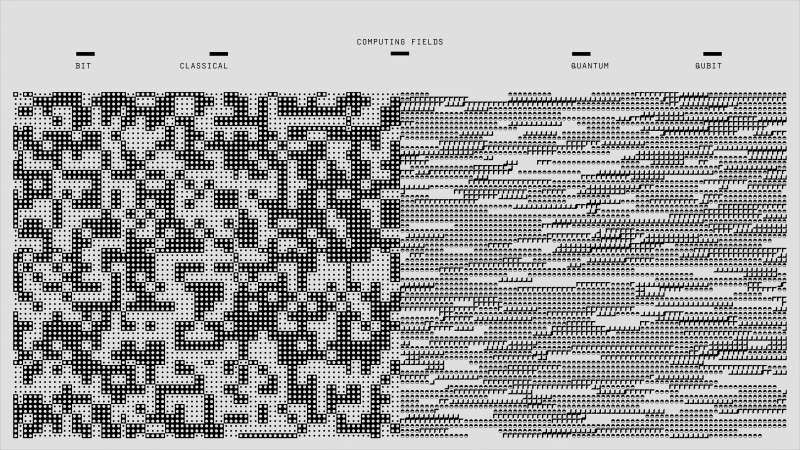No One-Size-Fits-All: Personalized HR for Modern Organizations
Published on: May 4, 2025
No One-Size-Fits-All: Personalized HR for Modern Organizations
Every organization is a living, evolving entity, shaped by its people, culture, and business objectives. While the need for effective human resources management is universal, the methods and tools that deliver the best results are as diverse as the organizations themselves. The notion that a single, standardized HR solution can address the nuanced needs of every business is increasingly outdated. Instead, personalized HR approaches, powered by advanced management tools and adaptive hr software, have become essential for modern organizations striving for agility, engagement, and sustainable growth.
The Diversity of Modern Workforces
Today’s workforce is more varied than ever before, encompassing multiple generations, cultures, work styles, and employment models. From full-time employees and freelancers to remote teams and gig workers, the composition of a company’s human capital can change rapidly. This diversity brings innovation and resilience, but it also requires HR departments to be more flexible and responsive. Off-the-shelf solutions often fail to capture the complexity of workforce management, resulting in inefficiencies and disengagement. Personalized HR systems, including web based hr software and workforce planning software, allow organizations to tailor their practices to the unique needs of their people, ensuring that every employee feels valued and supported.
Customizing Recruitment and Onboarding
Recruitment is the first touchpoint between a company and its future employees. Personalized recruitment strategies leverage data analytics, AI-driven assessments, and targeted outreach to attract candidates who align with the organization’s values and goals. Modern hr onboarding systems go beyond paperwork and compliance, offering interactive, role-specific onboarding experiences that accelerate integration and boost retention. Online onboarding platforms and employee onboarding platforms can be configured to deliver customized learning paths, mentorship opportunities, and feedback loops, ensuring that new hires receive the support and information they need to thrive from day one.
For example, a technology firm may prioritize technical skill assessments and peer-to-peer mentorship in its onboarding system, while a retail organization might focus on customer service simulations and cultural immersion. By leveraging flexible hr software, companies can adapt their onboarding processes to different roles, departments, and locations, creating a seamless and engaging entry point for every new employee.
Performance Management Tailored to Individual and Team Needs
Traditional performance management systems often rely on annual reviews and generic metrics, which can overlook individual contributions and team dynamics. Personalized HR approaches employ management tools that enable continuous feedback, goal-setting, and development tracking. These employee management tools can be customized to reflect the unique objectives and workflows of different teams, as well as the personal growth aspirations of each employee.
For instance, a sales team may benefit from real-time dashboards that track individual and collective targets, while a creative team might need collaborative project tool integrations that capture qualitative achievements. By adopting a workforce management system that supports flexible performance metrics and regular check-ins, organizations foster a culture of accountability and growth. This approach not only improves productivity but also enhances job satisfaction and retention, as employees feel recognized for their unique contributions.
Adapting to Remote and Hybrid Work Environments
The rise of remote and hybrid work has further underscored the need for personalized HR solutions. Managing distributed teams requires tools that facilitate communication, collaboration, and engagement across time zones and locations. Online employee management systems and labor management software offer features such as virtual attendance tracking, remote onboarding, and digital resource sharing, enabling HR departments to support employees regardless of where they work.
Personalized HR systems can also accommodate flexible work arrangements, such as compressed workweeks, job sharing, and part-time roles. By using workforce management services and labor management system capabilities, organizations can monitor productivity, ensure compliance, and maintain a sense of community among remote and on-site employees. This adaptability is crucial for attracting and retaining top talent in a competitive, globalized labor market.
Integrating Technology for Seamless HR Processes
Technology plays a pivotal role in enabling personalized HR. Modern hrm system platforms and management project tool solutions offer modular architectures that allow organizations to select and configure features based on their specific needs. This could include applicant tracking, employee onboarding, performance management, learning and development, payroll, and benefits administration. Integration with other business systems, such as project management software and communication tools, further streamlines HR operations and enhances the employee experience.
For example, an online onboarding platform can be linked to a company’s learning management system, automatically enrolling new hires in relevant training modules. HR software with built-in analytics can provide real-time insights into workforce trends, helping managers make data-driven decisions about recruitment, retention, and development. By leveraging these tools, organizations can create a cohesive and responsive HR ecosystem that evolves alongside their business.
Personalization in Learning and Development
Continuous learning is a cornerstone of organizational success. Personalized HR systems support individualized learning paths, enabling employees to develop skills that align with their roles and career aspirations. Management tools can be used to assess skill gaps, recommend training programs, and track progress over time. This approach not only enhances employee engagement but also ensures that the organization has the capabilities needed to adapt to changing market demands.
For instance, a workforce management system might use AI to suggest relevant courses based on an employee’s performance data and career goals. HR software can facilitate mentorship programs, peer learning opportunities, and cross-functional projects, fostering a culture of knowledge sharing and innovation. By investing in personalized learning and development initiatives, organizations empower their people to reach their full potential while driving business growth.
Flexible Benefits and Wellbeing Programs
Employee expectations around benefits and wellbeing have evolved significantly in recent years. Personalized HR approaches recognize that a one-size-fits-all benefits package may not meet the diverse needs of a modern workforce. Advanced employee management tools and labor software enable organizations to offer flexible benefits, such as health and wellness stipends, remote work allowances, and customizable insurance plans. These solutions can be tailored to different employee segments, ensuring that everyone has access to the resources they value most.
Wellbeing programs can also be personalized through the use of hr management software and workforce management services. For example, digital wellness platforms can offer personalized assessments, goal-setting, and coaching, helping employees manage stress, improve work-life balance, and maintain their health. By prioritizing employee wellbeing and offering flexible benefits, organizations demonstrate their commitment to supporting their people both inside and outside the workplace.
Data-Driven Decision Making in HR
Personalized HR relies on accurate, real-time data to inform decision making. Modern hr system solutions collect and analyze data from multiple sources, including recruitment, performance, engagement, and turnover metrics. This data-driven approach enables HR leaders to identify trends, anticipate challenges, and design interventions that address the specific needs of their workforce.
For example, predictive analytics can help HR teams identify flight risks among high-performing employees, enabling proactive retention strategies. Employee feedback platforms can uncover insights into engagement drivers and areas for improvement. By leveraging data from workforce management system tools and online employee management systems, organizations can continuously refine their HR practices and achieve better outcomes for both employees and the business.
Compliance and Risk Management in a Personalized HR Environment
While personalization offers many benefits, it also introduces complexity in terms of compliance and risk management. Different regions, industries, and employee groups may be subject to varying legal and regulatory requirements. HR software and labor management software must be equipped to handle these nuances, ensuring that policies and processes are compliant with local laws and industry standards.
For example, an international organization may need to customize its onboarding system to accommodate different tax forms, employment contracts, and training requirements in each country. Workforce management services can help monitor compliance with labor laws, health and safety regulations, and data privacy standards. By integrating compliance features into their HRM system, organizations can mitigate risks while still offering personalized experiences to their employees.
The Role of Leadership in Driving Personalized HR
Leadership commitment is essential for the successful implementation of personalized HR strategies. Executives and managers must champion the use of management tools and workforce management systems that support flexibility and individualization. This includes investing in technology, fostering a culture of continuous improvement, and empowering HR teams to experiment with new approaches.
Leaders also play a critical role in communicating the value of personalized HR to employees, ensuring buy-in and participation. By modeling inclusive and adaptive behaviors, leaders set the tone for a workplace where diversity is celebrated and every employee has the opportunity to succeed. This cultural shift is supported by management project tool solutions that facilitate transparent communication, goal alignment, and cross-functional collaboration.
Case Studies: Personalized HR in Action
Many organizations have successfully implemented personalized HR solutions to address their unique challenges. For example, a global technology company used a web based hr software platform to create customized onboarding journeys for different job families, resulting in higher retention and faster time-to-productivity. A healthcare provider leveraged workforce management services to design flexible scheduling systems, improving employee satisfaction and reducing overtime costs.
Retailers have adopted employee management tools to personalize training and development programs, leading to improved customer service and sales performance. Nonprofit organizations have used online onboarding platforms to streamline volunteer recruitment and engagement, ensuring that every participant receives the support they need. These examples demonstrate the transformative impact of personalized HR on organizational outcomes.
Challenges and Considerations in Implementing Personalized HR
Despite the clear benefits, implementing personalized HR solutions is not without challenges. Organizations must balance the desire for customization with the need for standardization and scalability. Too much personalization can lead to fragmented processes and increased administrative burden, while too little can result in disengagement and missed opportunities.
Data privacy and security are also critical considerations. Personalized HR systems collect sensitive employee information, making robust data protection measures essential. Organizations must ensure that their hr software and labor software comply with relevant regulations and industry best practices.
Change management is another key factor. Transitioning to a personalized HR model requires buy-in from stakeholders at all levels, as well as ongoing training and support. HR teams must be equipped with the skills and resources needed to leverage new management tools and adapt to evolving workforce needs.
The Future of Personalized HR
The future of HR lies in even greater personalization, driven by advances in technology, data analytics, and employee expectations. Artificial intelligence, machine learning, and predictive analytics will enable organizations to deliver hyper-personalized experiences at scale, from recruitment and onboarding to performance management and career development.
Emerging trends such as skills-based hiring, internal talent marketplaces, and personalized wellbeing programs will further enhance the ability of HR departments to meet the diverse needs of their workforce. As organizations continue to embrace flexible work models and digital transformation, the demand for adaptable, employee-centric HR solutions will only grow.
To stay competitive, organizations must invest in the right mix of management tools, workforce management systems, and HR software that can evolve alongside their business. By prioritizing personalization, companies can create a more engaged, productive, and resilient workforce, ready to meet the challenges of the modern world.
How xTimeTo and Similar Tools Enable Personalization
One of the key enablers of personalized HR is the availability of advanced management tools such as xTimeTo. These platforms offer a wide range of features designed to support flexible, scalable, and employee-centric HR processes. For example, xTimeTo allows organizations to create customized onboarding workflows, automate repetitive tasks, and integrate with other HR and business systems.
With capabilities such as real-time analytics, mobile access, and role-based permissions, tools like xTimeTo empower HR teams to respond quickly to changing workforce needs. The platform’s workforce management features enable organizations to optimize scheduling, track attendance, and manage labor costs, all while accommodating individual preferences and constraints.
By leveraging the power of online onboarding platforms, hr onboarding systems, and employee management tools, organizations can deliver personalized experiences that drive engagement and performance. These solutions also provide the flexibility needed to adapt to new business challenges, such as remote work, regulatory changes, and evolving employee expectations.
Best Practices for Implementing Personalized HR Solutions
- Assess Organizational Needs: Begin by conducting a thorough assessment of your organization’s workforce, culture, and business objectives. Identify areas where personalization can have the greatest impact, such as recruitment, onboarding, performance management, or benefits administration.
- Select the Right Tools: Choose management tools, workforce management systems, and hr software that offer the flexibility and scalability required to support your personalization goals. Look for solutions with modular architectures, integration capabilities, and user-friendly interfaces.
- Engage Stakeholders: Involve leaders, managers, and employees in the design and implementation of personalized HR solutions. Solicit feedback, address concerns, and ensure that everyone understands the benefits and responsibilities associated with new systems and processes.
- Prioritize Data Security: Implement robust data protection measures to safeguard employee information and ensure compliance with relevant regulations. Regularly review and update security protocols to address emerging threats and vulnerabilities.
- Monitor and Iterate: Continuously monitor the effectiveness of personalized HR solutions using data and feedback. Be prepared to make adjustments as workforce needs and business objectives evolve. Foster a culture of continuous improvement and innovation within the HR function.
By following these best practices, organizations can maximize the value of personalized HR solutions and create a more agile, engaged, and high-performing workforce.
Conclusion: Embracing Personalization for Organizational Success
Personalized HR is not a passing trend, but a fundamental shift in how organizations manage their most valuable asset: their people. By moving beyond one-size-fits-all approaches and embracing flexible, data-driven solutions, companies can unlock the full potential of their workforce. With the right combination of management tools, workforce management systems, and HR software, organizations can create inclusive, engaging, and high-performing environments where every employee has the opportunity to succeed.










